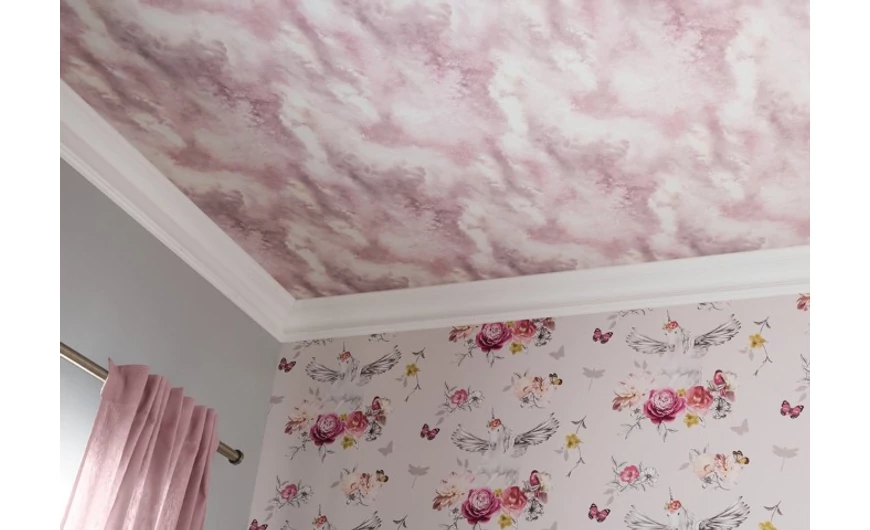The corners
Perhaps the most common problem is that corners are not wallpapered the way we would like. Well, for success, you just should not fit the edge of the wallpaper strip exactly into the corner. At a distance of about 2-3 cm you need to draw a vertical line, from which you can then glue the wallpaper. Simply translated, you need to leave it a little on the adjacent wall, so there will be no ugly fitting. This technique can be applied to both external and internal corners. If you have a wallpaper smoothing roller on hand, it can be used effectively at the outer corners.
Window and door recesses
In such cases, a shape equal to the size of the recess should be cut out of the wallpaper in order to leave a strip about 6 cm wide for overlapping around the opening.
The ceiling
First of all, it should be said that wallpapering the ceiling is a minimum job for two people. The already glued strip of wallpaper can be attached to the ceiling and pressed to the ceiling with a brush of the same size as the ceiling height of the room. Wallpapering the ceiling can be done gradually, since while one person glues it, the other person has to smooth it, keeping the rest of the wallpaper near the ceiling.
Light switches and electrical equipment
First and foremost, it is necessary to turn off the mains voltage even before starting work! If there is not enough light for wallpapering, then it is necessary to build local lighting with minimal voltage. Once this is done, it is necessary to remove the cover of the light switches, because only in this way it will be possible to glue the wallpaper accurately. If the fit is perfect, you need to let the wallpaper dry, after which you can cut around the substrate with a sharp blade. If excess wallpaper has been removed and the immediate vicinity of the light switch is completely dry, the cover can be put back on.
What about the edge of the wallpaper strip?
If the edges of the wallpaper separate from the wall during drying, it only means that the wrong amount of glue has been applied to the edge of the strip. In this case, all you have to do is carefully unravel the edge of the wallpaper and after a moment apply a layer of repair glue, pressing it to the back. Once this is done, you can use the wallpaper smoothing roller to attach the wallpaper to the wall again.

